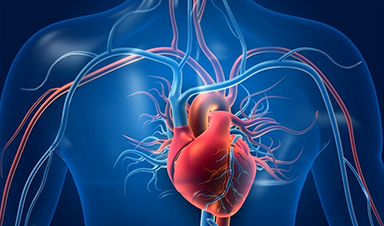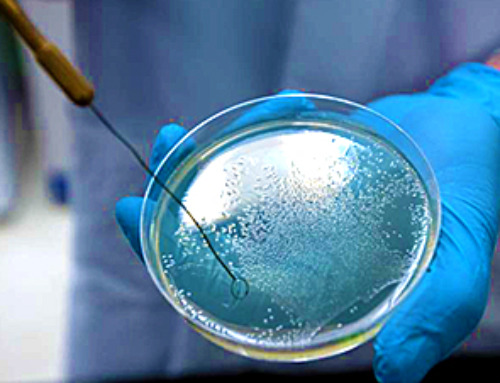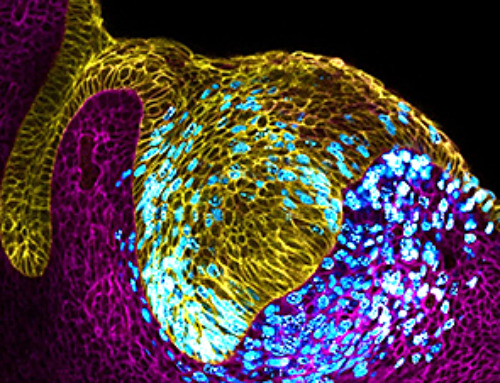Novel research on advancing heart valves has included the innovative use of carbon nanotubes modified with heparin. This pre-proof research has been submitted to the journal of Materials Chemistry and Physics and aims to alleviate the burden of heart valve replacements.
Heart Valves: What are They and Why are They Important?
There are four valves within the heart, namely, the bicuspid/mitral, tricuspid, aortic and pulmonary valves; these hold a significant role in ensuring the direction of blood flow is maintained in one direction throughout the heart chambers and backflow is prevented.
If these valves are not functioning effectively, it can affect blood flow throughout the body and these can be for reasons including, age, having congenital heart lesions, rheumatic carditis, aortic stenosis (where the valve has become narrowed) as well as aortic regurgitation (where the valve is leaky).
Dysfunction of heart valves is significant and requires replacement to ensure effective blood flow is directed to the cells in the body.
The most common type of congenital abnormality includes bicuspid aortic valves, with problems ranging from missing or having incomplete closure of aortic valves to supra-valvular stenosis.
While symptoms of this disease can be non-existent in the beginning, as the condition becomes more severe, individuals can experience chest pain, due to the heart having to work harder, shortness of breath, dizziness or lightheadedness, from the obstructed blood flow, as well as loss of consciousness.
Very severe cases can also result in heart failure.
The Problems with Conventional Heart Valve Replacements
The two most common types of heart valve replacements include mechanical and biological valves.
The former consists of synthetic materials and are made to last for several years; however, this route is associated with the formation of blood clots due to the tendency of blood sticking to the valves – this means patients are required to commit to a lifetime of taking blood-thinning medication, or anticoagulants.
Biological heart valves, which are also known as tissue valves, are usually taken from a human heart, referred to as a homograft, or from animal tissue, referred to as a xenograft. While this route has the benefit of not requiring anticoagulants, they are less durable and need replacement.
Novel Heart Valve Advancements
Innovative developments in this field over the years have included but are not limited to the use of collagen, silicone rubber as well as polyurethane.
Polyurethanes, a type of polymer, has been utilized for heart valve material and has been considered to be the best material, with natural interaction with biological systems, being resistant to clot formation and resistant to degradation.
The researchers of this particular study have identified the key component of heart valve design is the increase of fatigue life and aimed to fulfill this target through evaluating the fatigue behavior of carbon nanotubes.
Their use of carbon nanotubes is due to its remarkable physical, mechanical and thermal properties; when utilized within a composite material in the application of heart valves, they could potentially lead to positive results, especially with providing mechanical reinforcement for polymers and composites.
Additionally, other benefits of using carbon nanotubes consist of having high surface area, good flexibility, and low weight use as a catalyst base.
The inclusion of heparin, a negatively charged natural polysaccharide, was suggested to improve the efficacy of heart valve replacements and reduce the necessity of anticoagulant intake. The benefit of using heparin can be ascribed to its enhancement of hydrophilicity of modified surfaces and prevention of clot formation.
This research utilized a polyurethane-carbon nanotube nanocomposite coated with heparin in order to evaluate the optimum combination which may advance the field of heart valve replacements.
Future Outlook
While this study has developed innovation for the field of heart valves, which is necessary for the effective maintenance of healthy lives and quality of blood flow, it may still require further research.
However, the increase in heparin levels did result in a decrease in platelet aggregation, and can potentially be used for its anticlotting properties, in combination with carbon nanotubes, but this would require further testing with a large in vivo experiment to confirm the safety and efficacy of this research.
With an ageing population, the need to advance conventional heart valves is critical, especially for biological heart valve replacements which require further replacing after approximately 20 years depending on the tissue.
This is due to elderly populations being more vulnerable during surgery with the use of anaesthesia and requiring a replacement heart valve may not be possible for at-risk groups. Advancements in this field would ensure a higher quality of life for heart valve replacement patients as well as prioritize their health.
News
New Research Reveals That Your Sense of Smell May Be Smarter Than You Think
A new study published in the Journal of Neuroscience indicates that the sense of smell is significantly influenced by cues from other senses, whereas the senses of sight and hearing are much less affected. A popular [...]
Deadly bacteria show thirst for human blood: the phenomenon of bacterial vampirism
Some of the world's deadliest bacteria seek out and feed on human blood, a newly-discovered phenomenon researchers are calling "bacterial vampirism." A team led by Washington State University researchers has found the bacteria are [...]
Organ Architects: The Remarkable Cells Shaping Our Development
Finding your way through the winding streets of certain cities can be a real challenge without a map. To orient ourselves, we rely on a variety of information, including digital maps on our phones, [...]
Novel hydrogel removes microplastics from water
Microplastics pose a great threat to human health. These tiny plastic debris can enter our bodies through the water we drink and increase the risk of illnesses. They are also an environmental hazard; found [...]
Researchers Discover New Origin of Deep Brain Waves
Understanding hippocampal activity could improve sleep and cognition therapies. Researchers from the University of California, Irvine’s biomedical engineering department have discovered a new origin for two essential brain waves—slow waves and sleep spindles—that are critical for [...]
The Lifelong Cost of Surviving COVID: Scientists Uncover Long-Term Effects
Many of the individuals released to long-term acute care facilities suffered from conditions that lasted for over a year. Researchers at UC San Francisco studied COVID-19 patients in the United States who survived some of the longest and [...]
Previously Unknown Rogue Immune Key to Chronic Viral Infections Discovered
Scientists discovered a previously unidentified rogue immune cell linked to poor antibody responses in chronic viral infections. Australian researchers have discovered a previously unknown rogue immune cell that can cause poor antibody responses in [...]
Nature’s Betrayal: Unmasking Lead Lurking in Herbal Medicine
A case of lead poisoning due to Ayurvedic medicine use demonstrates the importance of patient history in diagnosis and the need for public health collaboration to prevent similar risks. An article in CMAJ (Canadian Medical Association [...]
Frozen in Time: How a DNA Anomaly Misled Scientists for Centuries
An enormous meteor spelled doom for most dinosaurs 65 million years ago. But not all. In the aftermath of the extinction event, birds — technically dinosaurs themselves — flourished. Scientists have spent centuries trying [...]
‘Mini kidneys’ reveal new insights into metabolic defects in polycystic kidney disease
Scientists at Nanyang Technological University, Singapore (NTU Singapore) have successfully grown 'mini kidneys' in the lab and grafted them into live mice, revealing new insights into the metabolic defects and a potential therapy for [...]
Decoding the Origin of Life: Scientists Solve Early Earth RNA Puzzle
Recent research illustrates how RNA molecules’ chemical characteristics might have played a crucial role in the development of complex life forms. How did complex life manage to evolve on the early, inhospitable Earth? Initially, [...]
Improving infectious disease testing with gold nanoparticles
By harnessing the power of composite polymer particles adorned with gold nanoparticles, a group of researchers have delivered a more accurate means of testing for infectious diseases. Details of their research was published in the [...]
New micromaterial releases nanoparticles that selectively destroy cancer cells
Researchers have developed micromaterials made up only of proteins, capable of delivering over an extended period of time nanoparticles that attack specific cancer cells and destroy them. The micromaterials mimic natural secretory granules found [...]
Alzheimer’s Breakthrough: Scientists Make Revolutionary Leap
Dementia is a major health issue worldwide in the 21st century, impacting over 50 million people globally. This figure is expected to soar to 152 million by 2050, as the global population ages. Alzheimer’s disease (AD) [...]
How small RNA molecules regulate viral infections of bacteria
Viruses need hosts. Whether it's measles, the flu or coronavirus, viral pathogens cannot multiply or infect other organisms without the assistance of their hosts' cellular infrastructure. However, humans are not the only ones affected [...]
Computer scientists discover gap in the latest security mechanisms used by some chips
Over the past few years, hardware manufacturers have developed technologies that ought to make it possible for companies and governmental organizations to process sensitive data securely using shared cloud computing resources. Known as confidential [...]






















